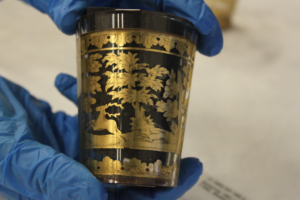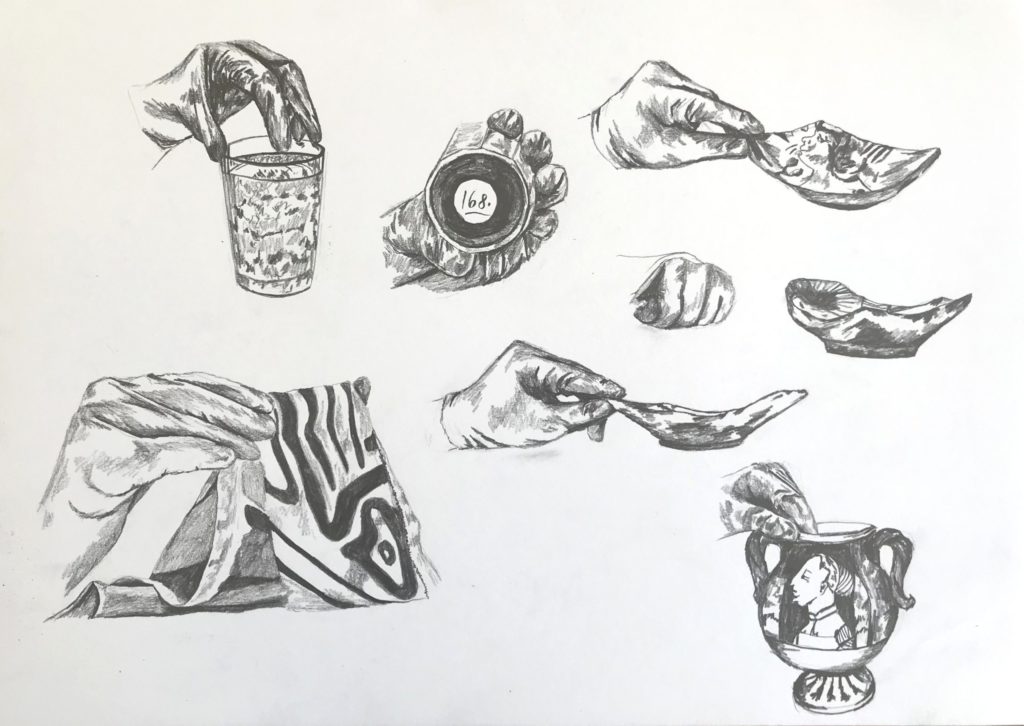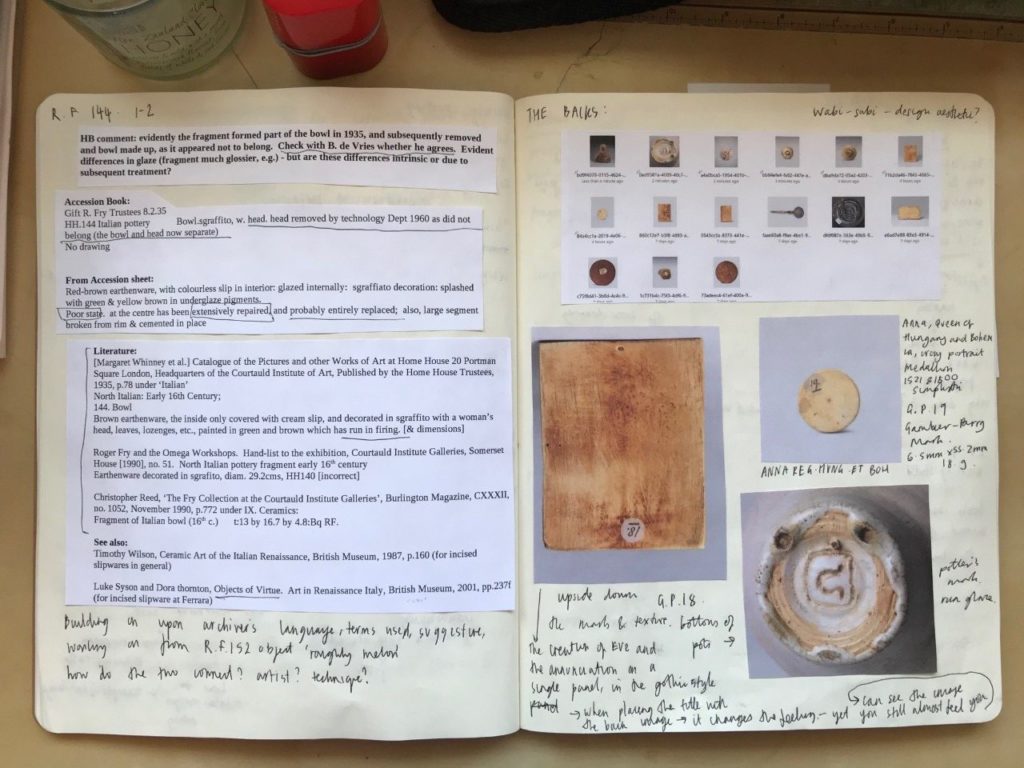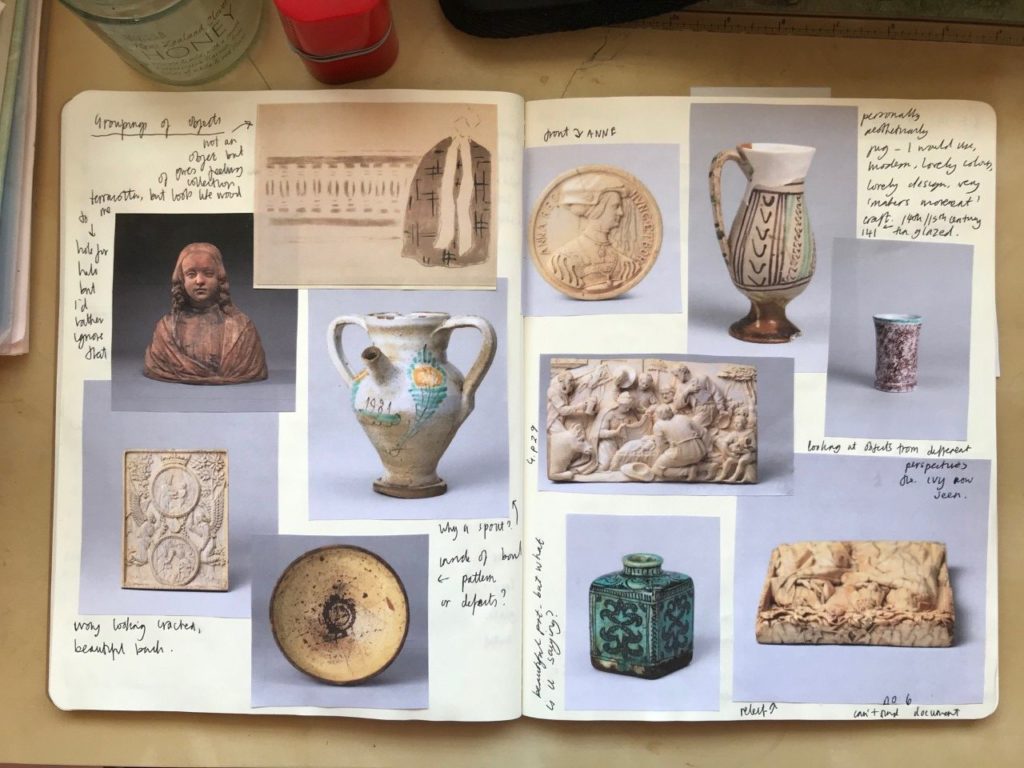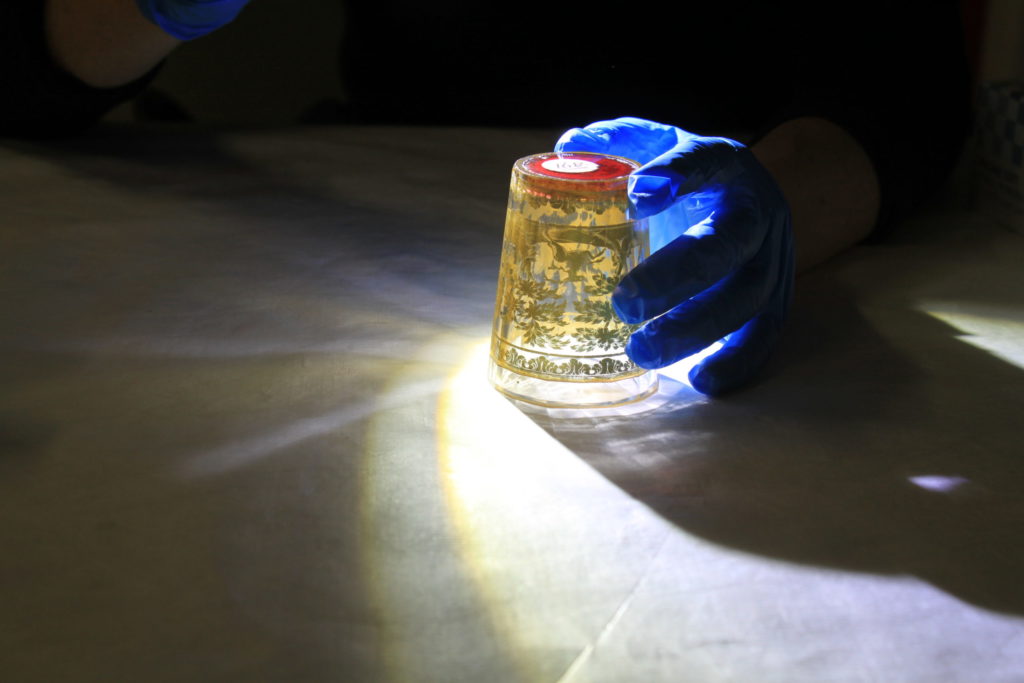
I had narrowed down my selection to the final two objects ready to be explored further, with thoughts on their display coming into vision now I could finally see them in the non virtual world. It was a wonderful experience to meet Courtauld curator Alexandra Gerstein, Science Museum curator Katy Barrett, and Courtauld technician Matthew Thompson all in one physical space to sit, discuss and handle the objects as we encountered them.
The pair of glass beakers were first. They were initially smaller than I thought, but more beautiful and delicate in-person with a lovely weight to them. I had only seen one side of the gold illustrations however, due to what is on the photo catalogue website. So it was very refreshing to see all sides of the story unfold, beyond the hunter on horseback, as well as being able to compare and contrast the differences in the illustrations of the two beakers.

We played around with lighting from different angles to see how the object changed. On my initial video call I had enjoyed ‘seeing’ them rotating against the light, giving the illustrations with the faceted edge a feeling of a zoetrope, so wanted to see how that worked with moving the torch.
Thinking about possible display, we tried different ‘fillings’ inside the beakers to either see the illustrations more clearly or to obscure them for the sense of illusion. Black works well to properly understand the scene, however we lose the immersive interaction from the blurred faceted edges when seen through the glass.
We can also see the bubbles emerging from the up-lit torch which help to make visible the zwischengoldglas technique in which two glasses are cemented together, with the gold foil beneath, also trapping air bubbles with the illustration. This poses display questions such as how to light the objects; whether to disguise or highlight the illustrated scenes; and how to evoke how contemporaries would have seen the beakers by candlelight.
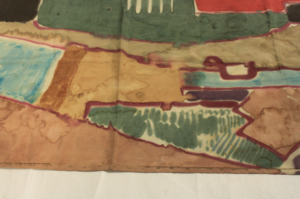
Next up was the scarf. It comes in this very large archive format box filled to the brim with tissue paper. We delicately placed it onto the table and began to study it; the close-up stitching, the painting technique, the blending colours. I also found it to be a really good size, weirdly I was expecting it to be larger, even though I knew the measurements, but found myself thinking it would work well in the display cabinet – however ‘how’ would prove a longer discussion.
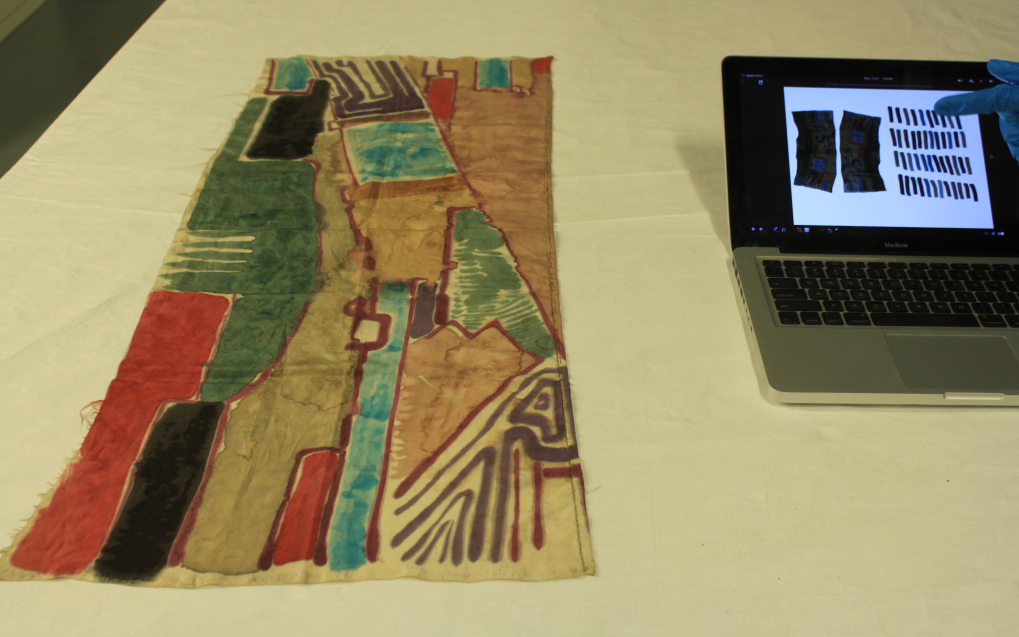
Our first port of call was figuring out which way round the ‘scarf’ was intended to be. We based it off the photograph on file with definitely one side feeling the more ‘finished’. I’d initially done a little colour and rotation test to see which way round I thought the scarf would be best to hang so we got this out to compare with the real object. We continued to survey how the dyes might have been painted on. Asking The Courtauld’s paper conservator, Kate Edmondson, whether a wax batik could have possibly been used. She was also very helpful in terms of discussing display ideas and looking at ‘runs’ in the ink or possible water damage.I also found that the colours on the photograph I’d been working with were much more muted than on the real textile. I’d been looking at synthetic dyes in my research and I thought it would be helpful to try to pull direct colours from the scarf to create a swatch palette that could be used for designing and to link a specific colour to how a specific synthetic dye would have been made. But as you can see these are very different from the ‘real life’ object.
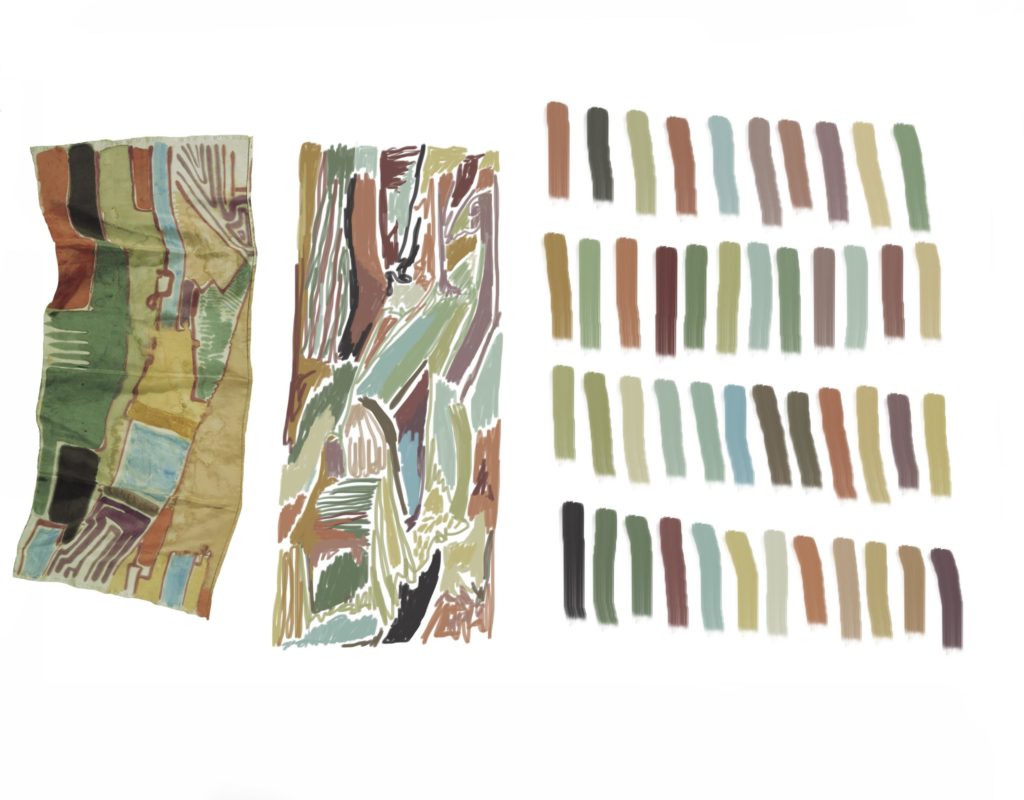
This visit to the storage room to see my chosen objects has automatically propelled my research even further. The objects have given me new things to consider and work towards, as well as highlighting areas I need to focus more on. The next steps are drawing up plans for the design of display, as well as getting together my visual and technical research for the web content. Exciting things ahead!



